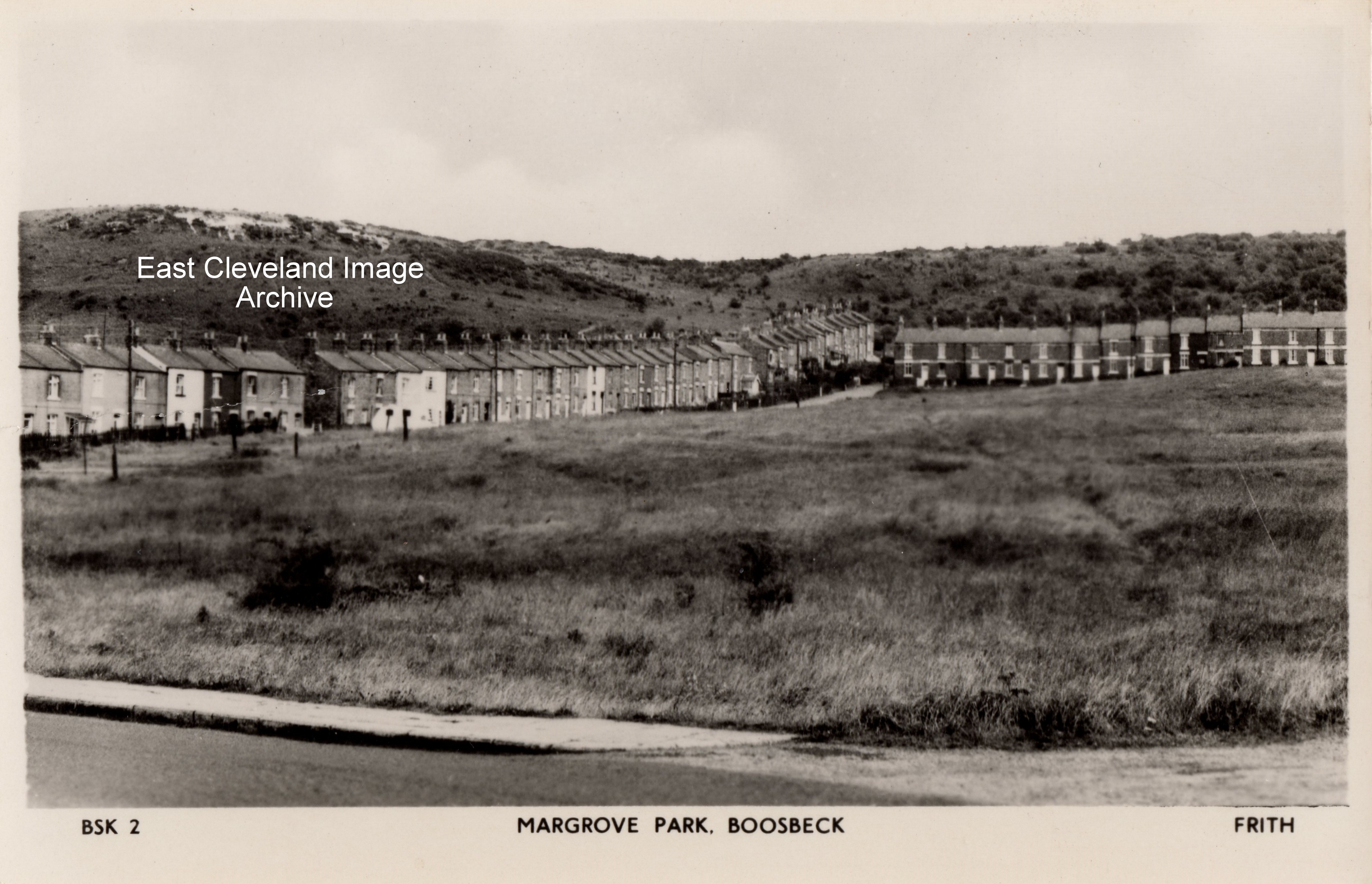
More familiarly known as “Magra” this Frith postcard is believed to date from the 1950s and is the best image as yet available to the Archive. This small community developed as a result of South Skelton ironstone mine being built in the 1850s and originally consisted of the two terraces of houses forming an L-shape on the hillside; between 1928 and 1933 Margrove and other local communities was closely linked to the Heartbreak Hill initiative by the Pennyman family of Ormesby Hall. The aim being to assist the residents whose lives had been devastated during the Depression; more recently this believed good works may have been had links to Nazi ideals and is still open for debate.
Image courtesy of Julie Tyrka.
Does anyone have any information about a civil defence training facility at Magra. It had a number of scaled down buildings that I believe were used in war training exercises.
It was taken over, I think, in the early 1970s by a firm that intended to manufacture caravans.
I don’t know whether that enterprise ever took off.
Any information would be most welcome.
When I lived there the Civil Defence people used the abandoned mine buildings for training in the 1960’s during the supposed Cold War
The training facility was extensive. It was configured on the footprint of the mine buildings. This basic layout was enhanced with new-build structures that included a series of designated Confined Spaces. A number of rescue vehicles were garaged in the old main admin building.
Post-nuclear attack casualties were drawn from volunteer civilians, including children. At the age of 12 years, in 1958, I was asked to participate. I used to arrive mid- Morning on an exercise day. Then I was given a script concerning my injuries. I would then be dressed accordingly and fake blood was applied. Once in role, Iwould be escorted to my designated area and placed under debris. Where appropriate confined spaces would be filled with theatrical smoke to add realism. One thrilling evacuation included being secured to a stretcher and being lowered by ropes from a shattered two story building.
Hi Richard,
The Civil Defence facility was in the Pit Yard of ‘Stanghow Ironstone Mine’ at Margrove Park.
My nana (Mrs Wiles) was a cleaner there and sometimes took me with her to clean at the long wooden building near the ‘Power House’. That was probably the main offices. I was only about 5 or 6 and only really remember they had quite a few blackboards! Apparently the man in charge was called Ernie and was invited to my mam’s wedding. She still has the whisk/mixer he bought her.
When I was older, we used to get into the Pit Yard/Civil Defence through a hole in the wire fence and play in the ‘houses’ you mention. They were only brick ‘shells’ with slate roofs but were full size. No windows, doors, or anything inside, just floorboards. There was a gravel road and the houses were set either side, I remember a bus stop sign as well. It was like a creepy deserted village!.
Towards the centre of the site I seem to remember a short elevated terrace of ruined buildings with manholes and concrete tunnels under the floor which we used to go through, these have now gone.
The caravan company was set up in the early 70’s I think. They used the ‘Power House’ as a workshop and I believe they were quite successful and ran for many years.
The whole Pit Yard/Civil Defence area is now a caravan site. The larger houses are still there, painted white and now habitable. Can easily be seen on Google Maps satellite view, at the Southern edge of the caravan site.
Hope this is of some help
Ian Porritt
If you search Catterickcamphistory, all one word on Youtube, you will find a Civil Defence film that was made at Margrove Park. There is footage of me secured to a stretcher as a would be casualty. If memory serves well the film was made in 1961, and features members who were employed at 31 Command Workshops at Catterick. I recall dropping stones down some of the old mine workings, and it taking several seconds before a splash occurred, indicating the depth of the shafts. We used to get fed from the field kitchens of what was then the WVS, now WRVS, and as with any form of emergency catering, the food was spot on.
Ernie, referred to above, used to drive a Morris PV van that was always immaculate. Passengers sat on wooden benches with hinged lids that that provided underseat storage, and ran lengthways down the van.
Yes I volunteered for the civil defence there in the early 60s long time ago now I don’t remember much about it.